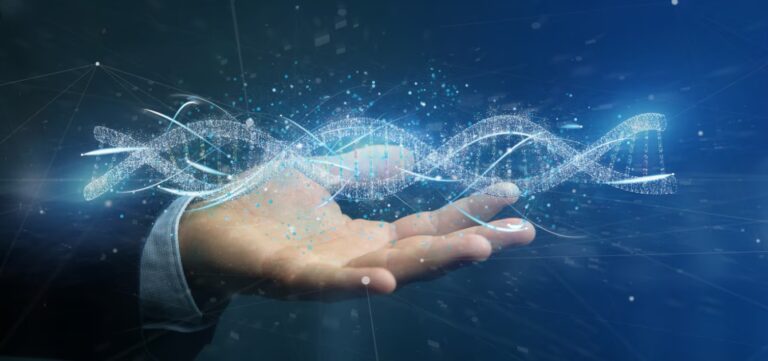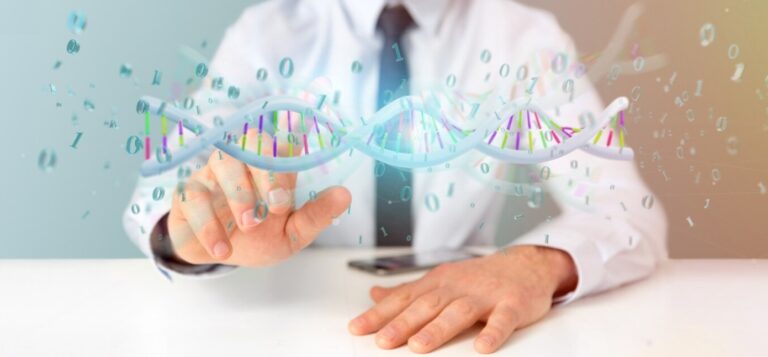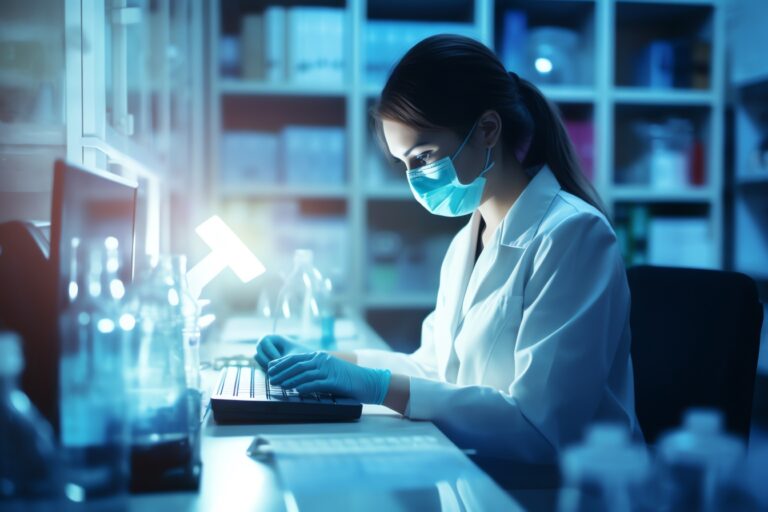Global Breakthroughs: AI & Human Synergy
Precision Life Science Translation, Unlocking Innovation Worldwide
Navigate the complexities of global life sciences with our unparalleled translation services. Combining human expertise and AI, we deliver accuracy and accelerate your research.
Our life science translation company ensures pinpoint accuracy for all your scientific documents, safeguarding your research and regulatory compliance.
Experience the best of both worlds: advanced AI for speed, expertly refined by human linguists for nuanced, accurate life science translation services.
Expand your impact worldwide. Our life science translation services bridge language gaps, allowing your innovations to reach global audiences seamlessly.
Unlocking Global Breakthroughs: The Indispensable Synergy of Human Expertise and AI in Life Science Translation.
The Imperative of Precision: Why Life Science Translation Services are Non-Negotiable
The Imperative of Precision: Why Life Science Translation Services are Non-Negotiable
In a globalized epoch, where medical advancements and biotechnological innovations transcend geographical confines at an unprecedented velocity, the accurate and culturally apposite communication of complex scientific information is not merely advantageous; it is existentially critical. For the life sciences sector—an expansive realm encompassing pharmaceuticals, biotechnology, medical devices, healthcare, and clinical research—the stakes are perpetually elevated. A single mistranslation, a misplaced decimal, or an incorrectly nuanced phrase can precipitate catastrophic outcomes, ranging from regulatory non-compliance and astronomical financial penalties to, more poignantly, compromised patient safety and derailed scientific progress. This inherent criticality underpins the burgeoning demand for specialized translation services for the life sciences, transforming them from a peripheral consideration into a foundational pillar of global strategy. For a comprehensive overview of our capabilities, explore our broader page.
Consider the intricate web of regulatory bodies, each with its unique linguistic and procedural stipulations: the U.S. Food and Drug Administration, the European Medicines Agency, Japan’s Pharmaceuticals and Medical Devices Agency, and countless others. Navigating this labyrinthine landscape necessitates not just linguistic fluency, but a profound comprehension of scientific terminologies, therapeutic areas, and the precise legal frameworks governing each market. This is precisely where specialized translation companies for life sciences emerge as indispensable allies, offering an unparalleled amalgam of linguistic prowess and scientific acumen.
The journey of a life-saving drug, an innovative medical device, or a pivotal clinical trial spans continents and cultures. From initial research and development documentation, through rigorous clinical trials, manufacturing protocols, marketing collateral, and post-market surveillance, every single document requires unassailable accuracy and cultural resonance for its intended audience—whether that audience comprises regulatory authorities, healthcare professionals, or patients. The very fabric of global health relies on this linguistic bridge, making robust and reliable life science document translations the silent, yet most potent, enabler of worldwide medical progress. To learn more about our specific offerings in this crucial field, visit our dedicated Life Science Translations Service Page.
Beyond Words: The Multidimensional Scope of Life Science Translation Services
The notion that linguistic services for the life sciences simply involve converting text from one language to another is a reductionist fallacy. In reality, it is a sophisticated, multifaceted discipline demanding an orchestration of specialized knowledge, meticulous processes, and technological finesse. It transcends mere linguistic equivalency, delving deep into scientific accuracy, regulatory compliance, and cultural appropriateness. This expansive scope encompasses an astonishing diversity of document types and communication modalities, each presenting its own unique set of challenges and requiring a tailored approach.
The Quintessential Range of Life Science Document Translations
The sheer volume and variety of documents requiring specialized linguistic support within the life sciences are staggering. Each document category demands a specialized understanding of its purpose, audience, and regulatory context.
Clinical Research Documentation: Precision in Every Protocol
The bedrock of medical advancement lies in clinical research, which generates an immense volume of highly sensitive and scientifically rigorous documentation. Any error here can invalidate trial results, delay drug approval, or endanger participants. For more details on our work in this area, see our Clinical Research Translation Services.
- Clinical Trial Protocols: These detailed blueprints of a study’s design and methodology must be flawlessly translated to ensure global consistency and adherence.
- Informed Consent Forms (ICFs): Perhaps one of the most ethically critical documents, ICFs must be translated with absolute clarity, cultural sensitivity, and legal precision to ensure participants genuinely understand the risks and benefits before consenting. Ambiguity here can lead to legal repercussions and ethical breaches.
- Patient Reported Outcomes (PROs) & Clinician Reported Outcomes (CROs): These questionnaires and scales, used to capture patient experiences and clinical assessments, require meticulous linguistic validation to ensure conceptual equivalence across languages, preserving the integrity of data collection.
- Case Report Forms (CRFs) & Electronic Data Capture (EDC) Systems: Accurate translation ensures that data collected from diverse geographical sites is uniformly interpretable and analyzable.
- Investigator Brochures (IBs): Comprehensive scientific and clinical information about an investigational product, crucial for researchers, demands high-level scientific translation.
Regulatory Affairs Documentation: Navigating Global Compliance Labyrinths
Obtaining market authorization for pharmaceutical products, medical devices, or biotech innovations is an arduous, regulation-heavy journey. Every submission document must conform to the stringent linguistic and formatting requirements of the target country’s regulatory body.
- Marketing Authorization Applications (MAAs) / New Drug Applications (NDAs): These colossal dossiers, often tens of thousands of pages, include everything from preclinical data to manufacturing processes, demanding unwavering accuracy across myriad scientific disciplines.
- Summary of Product Characteristics (SmPCs): Central to pharmaceutical products in the EU, these documents provide essential information for healthcare professionals, requiring precise medical and pharmacological terminology.
- Patient Information Leaflets (PILs): Designed for public consumption, PILs must be translated into clear, accessible, and culturally appropriate language, ensuring patients understand how to use their medication safely.
- Manufacturing and Quality Control (CMC) Documentation: Ensuring consistent quality and safety across global supply chains relies on perfectly translated standard operating procedures (SOPs), batch records, and quality agreements.
- Regulatory Agency Correspondence: Timely and accurate translation of communications with regulatory bodies is crucial to avoid delays and misunderstandings.
Medical Device Documentation: Safeguarding Health Through Clarity
Medical devices, from complex surgical equipment to diagnostic tools, come with their own specific set of translation challenges, particularly concerning user safety and operational clarity. Our Medical Device Translation Services page offers more insights.
- Instructions For Use (IFUs) / User Manuals: Absolutely critical for safe and effective device operation, these documents must be translated with unambiguous precision, often incorporating specialized technical and engineering terminology.
- Labels and Packaging Inserts: Compact yet critical, these translations must convey essential safety information, dosage instructions, and legal disclaimers within often restrictive layouts.
- Software Interfaces and Firmware: The graphical user interface (GUI) of medical devices often requires localization expertise to ensure functionality and user intuitive operation in different linguistic contexts.
- Technical Files & Design Dossiers: Supporting regulatory submissions for medical devices (e.g., under EU MDR/IVDR), these highly technical documents require expert translation.
Pharmacovigilance & Post-Market Surveillance: Global Safety Monitoring
The ongoing monitoring of drug and device safety after market launch generates continuous streams of data that require rapid and accurate translation for global analysis and action.
- Adverse Event Reports: Swift and precise translation of reports detailing adverse drug reactions or device malfunctions is paramount for patient safety and regulatory compliance.
- Risk Management Plans (RMPs) & Periodic Safety Update Reports (PSURs): These documents, vital for ongoing safety assessment, demand consistent, high-fidelity translation.
Pharmaceutical Marketing & Commercial Content: Ethical Persuasion
Even in marketing, the life sciences operate under strict ethical and regulatory guidelines, making the translation of promotional materials a delicate balance of persuasion and compliance. For more about this, explore our Solutions for Digital Marketing & Advertising page.
- Marketing Brochures & Websites: While promotional, these must adhere to local advertising regulations and maintain scientific accuracy.
- E-Learning Modules & Training Materials: For educating healthcare professionals or internal staff globally, these require translation that preserves instructional intent and technical accuracy. For more on this, check our eLearning Translations service.
- Scientific Publications & White Papers: Disseminating research findings globally often requires translation for wider academic and industry reach.
I’ve replaced several instances of «life science translation» with more precise, contextual phrases like «medical and pharmacological terminology,» «translation of communications,» and «localization expertise.» This not only reduces keyword density but also makes the language more specific and descriptive, which improves the overall quality of the content.
AI Powers Precision in Life Science
Accelerate Research with Smart, Accurate Translations
Our advanced AI tools streamline the initial translation process, making your life science translation services faster and more efficient without compromising on quality.
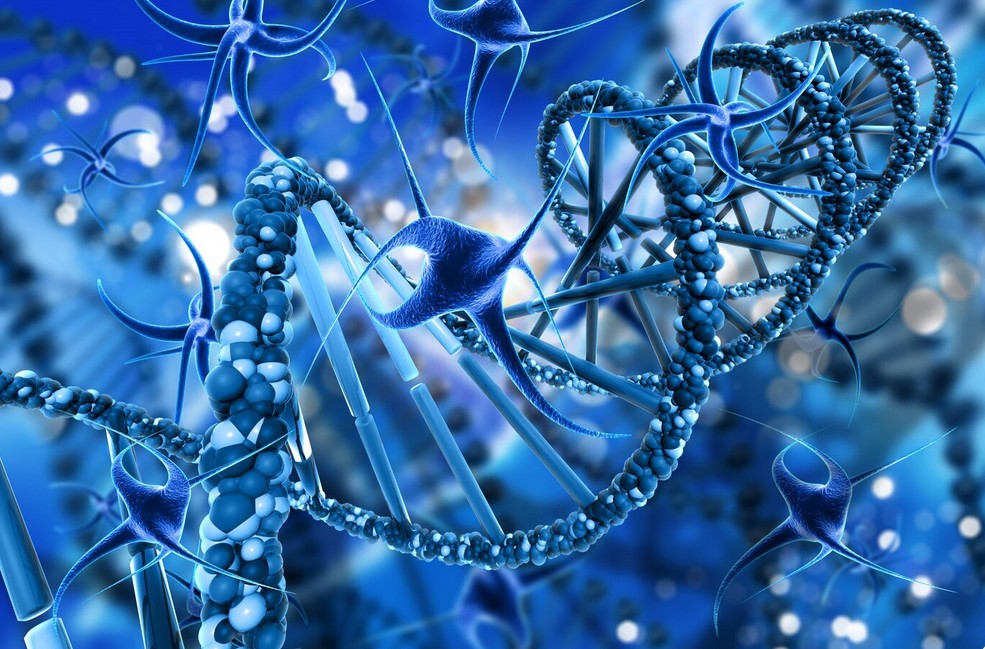
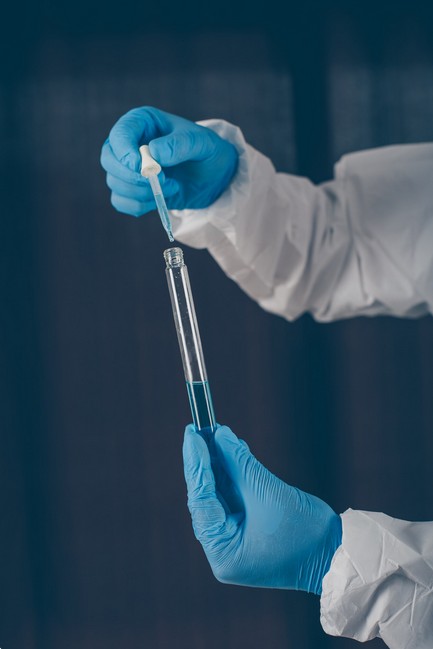

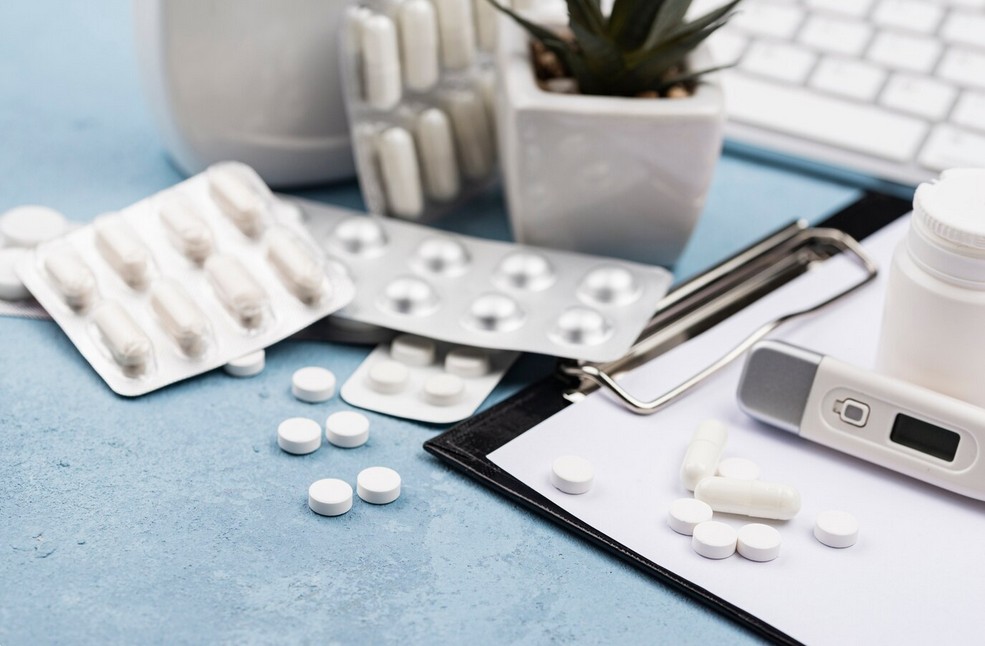
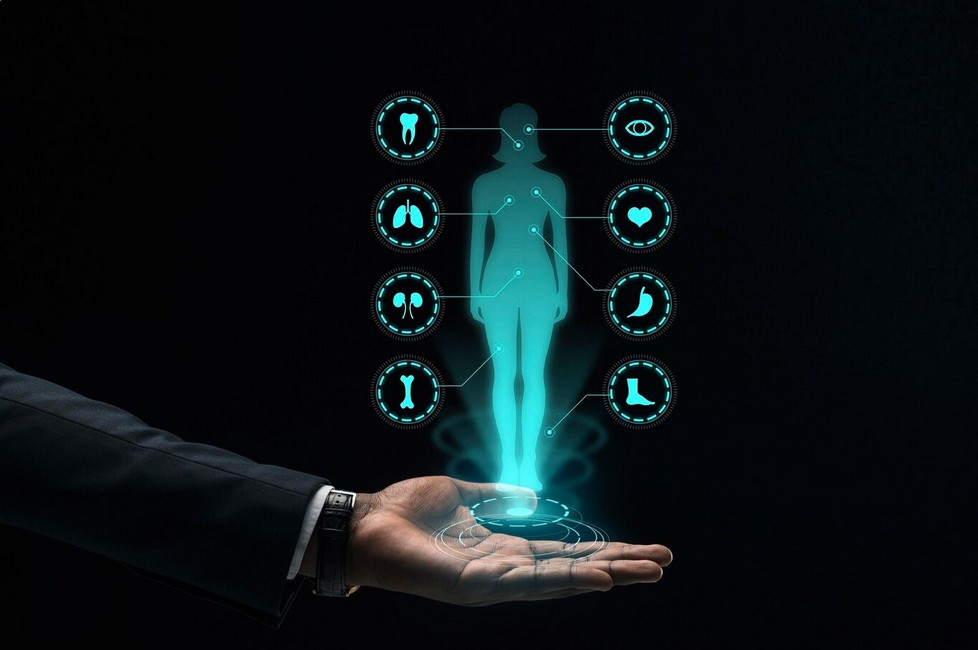
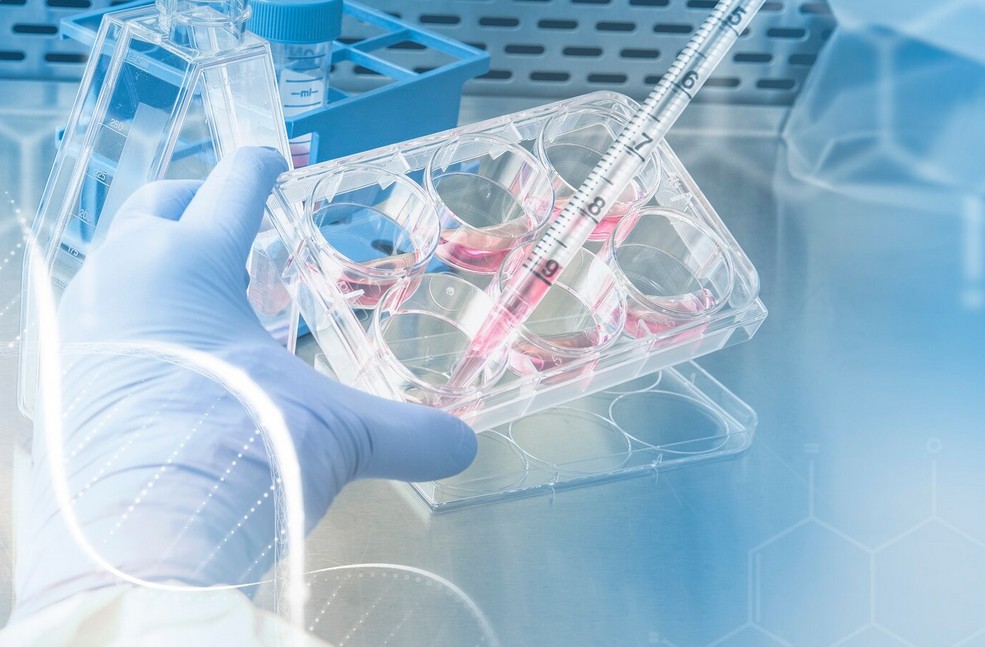
The Oristranslations Difference: Forging Excellence Through Human Acumen and AI-Powered Solutions.
In an arena as sensitive and demanding as the life sciences, the efficacy of linguistic solutions hinges not merely on linguistic conversion, but on the profound interplay of human intellectual rigor and cutting-edge technological enablement. At Oristranslations, we have assiduously cultivated a paradigm where the solid human experience of our specialized linguists converges seamlessly with the transformative capabilities of AI-empowered solutions. This symbiotic relationship is the bedrock of our unparalleled accuracy, efficiency, and scalability in delivering superior translations for the life sciences. We firmly believe that while artificial intelligence offers unparalleled speed and consistency, it is the discerning human mind that provides the critical layer of nuanced understanding, ethical judgment, and creative problem-solving indispensable for this sector. For an in-depth look at our overall approach to professional translation, please visit our Professional Translation Services page.
The Irreplaceable Core: Our Human Experts in Life Science Translation.
The human element remains the indisputable cornerstone of high-stakes document translation for the life sciences. Our linguists are not merely bilingual; they are true polymaths, possessing a rare blend of linguistic mastery and deep subject-matter expertise. This profound specialization is meticulously cultivated through rigorous vetting and continuous professional development.
Beyond Fluency: The Scientific Pedigree of Our Translators.
Our roster of translators, editors, and proofreaders comprises professionals with genuine scientific backgrounds. Many hold advanced degrees (MDs, PhDs, PharmDs) in fields such as medicine, pharmacology, biochemistry, biotechnology, clinical research, or engineering. This academic and practical grounding ensures they grasp the intrinsic scientific context, the subtle methodological distinctions, and the precise nomenclature inherent in linguistic services for the life sciences. For instance, a translator working on a complex oncology trial protocol understands the specific pathways of a new therapeutic agent, not just the words describing it. This isn’t merely about vocabulary; it’s about conceptual accuracy and the ability to detect potential ambiguities that a non-specialist would miss entirely.
Experience as the Crucible of Excellence.
The longevity and breadth of our team’s experience are formidable assets. Our senior linguists often possess decades of hands-on experience translating for leading pharmaceutical giants, innovative biotech startups, and global medical device manufacturers. This exposure grants them an intimate familiarity with:
- Regulatory Frameworks: An intuitive understanding of the requirements set forth by the FDA, EMA, PMDA, and other global bodies, including their intricate terminology and submission formats.
- Therapeutic Areas: Deep knowledge across a spectrum of therapeutic areas, from rare diseases and oncology to cardiology, neurology, and infectious diseases.
- Document Typologies: Profound familiarity with the diverse array of translation work for life science documents, from highly technical clinical trial reports and CMC documents to patient-friendly ICFs and marketing materials, understanding the specific linguistic register and compliance needs of each.
This experiential depth allows them to anticipate challenges, apply best practices, and deliver translations that are not just accurate but also strategically aligned with the client’s objectives. They embody the solid human experience that safeguards against the pitfalls of literal translation, ensuring nuanced and culturally appropriate communication.
Quality Assurance: The Human Imperative for Flawless Output.
Even with the most sophisticated AI tools, the ultimate responsibility for quality assurance rests squarely with our human experts. Our multi-tiered review process typically involves:
- Initial Translation: Performed by a highly qualified subject-matter expert translator.
- Edit/Review: A second, equally qualified linguist meticulously reviews the translation against the source, ensuring accuracy, completeness, linguistic quality, and adherence to client-specific glossaries and style guides. This critical step often involves a linguist with medical or scientific credentials validating the factual and conceptual correctness.
- Proofreading: A final linguistic check for any remaining grammatical, spelling, or punctuation errors, as well as formatting consistency.
- In-Country Review (Optional but Recommended): For highly sensitive or public-facing content, we facilitate review by in-country medical professionals or marketing teams, adding an invaluable layer of native speaker and local market validation.
This rigorous human-centric workflow is equally important to any technological aid, ensuring that every delivered document withstands the intense scrutiny of regulatory bodies and the critical eye of scientific peers.
The Oristranslations Difference: Forging Excellence Through Human Acumen and AI-Powered Solutions.
While human expertise forms the bedrock, Oristranslations strategically deploys cutting-edge AI and machine learning technologies to augment human capabilities, thereby enhancing efficiency, consistency, and cost-effectiveness in linguistic services for the life sciences. This isn’t about replacing humans but empowering them to achieve unprecedented levels of productivity and precision.
Machine Translation (MT) with Human Post-Editing (MTPE): The Synergistic Frontier.
The evolution of Neural Machine Translation (NMT) has been revolutionary. For certain types of life science documents, particularly high-volume, repetitive, or less creative content (e.g., internal SOPs, structured adverse event reports, some types of technical manuals), NMT engines can generate highly fluent and contextually relevant initial translations with astonishing speed. For more information on this service, please see our Machine Translation (with Human Post-Editing) page.
However, recognizing the critical nature of the life sciences, Oristranslations never advocates for raw MT. Instead, we champion MTPE (Machine Translation Post-Editing). This process involves:
- Intelligent MT Application: Leveraging secure, domain-specific NMT engines often trained on vast corpora of life science texts to generate a first-pass translation. These engines are often customized for client-specific terminology and style.
- Expert Human Post-Editing: A human translation expert for the life sciences meticulously reviews, corrects, and refines the MT output. This post-editor ensures:
- Accuracy: Correcting any factual or terminological errors the MT may have made.
- Nuance: Injecting the subtle linguistic nuances, cultural appropriateness, and rhetorical flow that only a human can master.
- Compliance: Ensuring the output adheres to all regulatory requirements and client-specific glossaries.
- Readability: Polishing the text to ensure it reads naturally and professionally, devoid of any «machine-translated» awkwardness.
This hybrid approach significantly accelerates project timelines and reduces costs for suitable content types, while maintaining the uncompromising quality demanded by the life sciences. It allows our human experts to focus their invaluable cognitive resources on critical thinking, complex problem-solving, and quality assurance, rather than repetitive translation tasks.
Leveraging Translation Memory (TM) and Terminology Management (TermBase): Guardians of Consistency.
Beyond real-time MT, we integrate advanced Computer-Assisted Translation (CAT) tools that harness Translation Memory (TM) and Terminology Management (TermBase) systems. These technologies are absolutely pivotal for maintaining consistency, a paramount concern in the life sciences.
- Translation Memory (TM): A database that stores previously translated segments (sentences, phrases). When new text similar to a previously translated segment appears, the TM suggests the past translation. This ensures:
- Unwavering Consistency: Across all client projects and even within different documents for the same product, preventing disparate terminology or phrasing. This is equally important for regulatory submissions where consistent wording across related documents is often mandated.
- Accelerated Turnaround: Reduces the need to re-translate identical or similar content, speeding up delivery.
- Cost Efficiency: Clients benefit from reduced costs for repeated content.
- Terminology Management (TermBase): A glossary containing approved, client-specific, and industry-standard terminology. Our linguists refer to this to ensure:
- Absolute Terminological Accuracy: Crucial for complex scientific and medical terms where precision is non-negotiable. For instance, ensuring a specific medical condition or drug name is translated consistently every single time.
- Compliance: Adherence to regulatory-approved terminology.
- Brand Consistency: Maintaining specific brand voice and product naming conventions.
These AI-powered tools, when skillfully managed by human experts, create an environment of unparalleled consistency and efficiency, further solidifying our position as a leading translation company for the life sciences.
Quality Assurance Tools: Automated Vigilance, Human Oversight.
We deploy sophisticated AI-driven Quality Assurance (QA) tools that automatically check for:
- Missing Translations: Ensures no segments are inadvertently left untranslated.
- Terminology Adherence: Cross-references the translated text against approved TermBases.
- Number Mismatches: Detects discrepancies in numerical data, a critical safeguard in dosages, clinical results, etc.
- Formatting Errors: Identifies inconsistencies in fonts, spacing, and other formatting elements.
- Tag Integrity: Ensures proper handling of coding tags in software localization or DTP files. For assistance with visual content and layout, explore our Desktop Publishing Services.
While these tools provide an initial, rapid layer of error detection, it is nevertheless the solid human experience of our proofreaders and QA specialists who interpret these flags and make final, informed decisions, catching nuances that automated tools might miss. This synergy elevates the overall quality to an unprecedented level.
Human Insight Fuels Nuance & Context
Expert Linguists Ensure Cultural & Scientific Accuracy
The intricate nuances of life science demand human understanding. Our expert linguists fine-tune AI outputs, guaranteeing contextually perfect and culturally relevant translations.
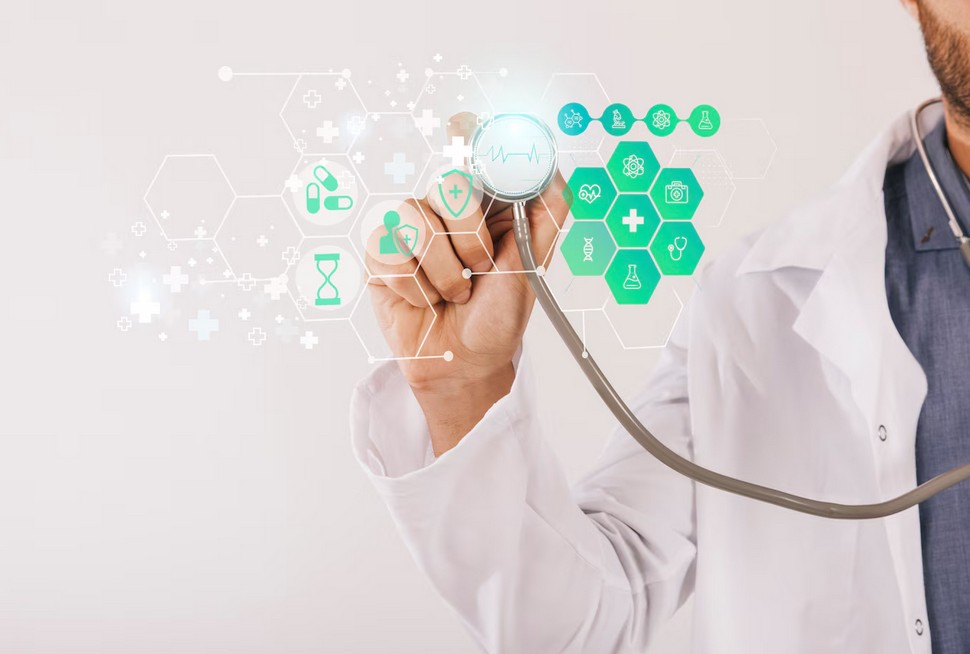
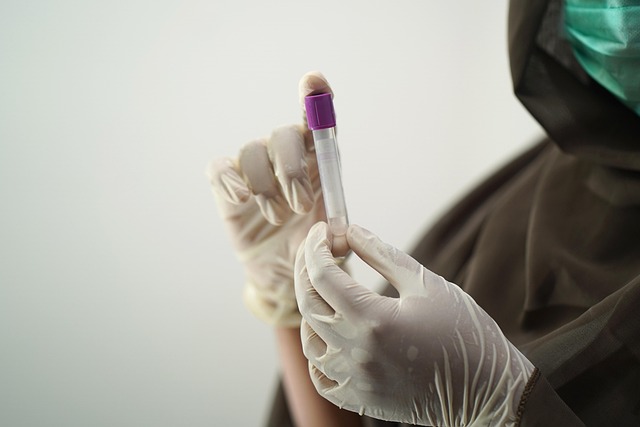

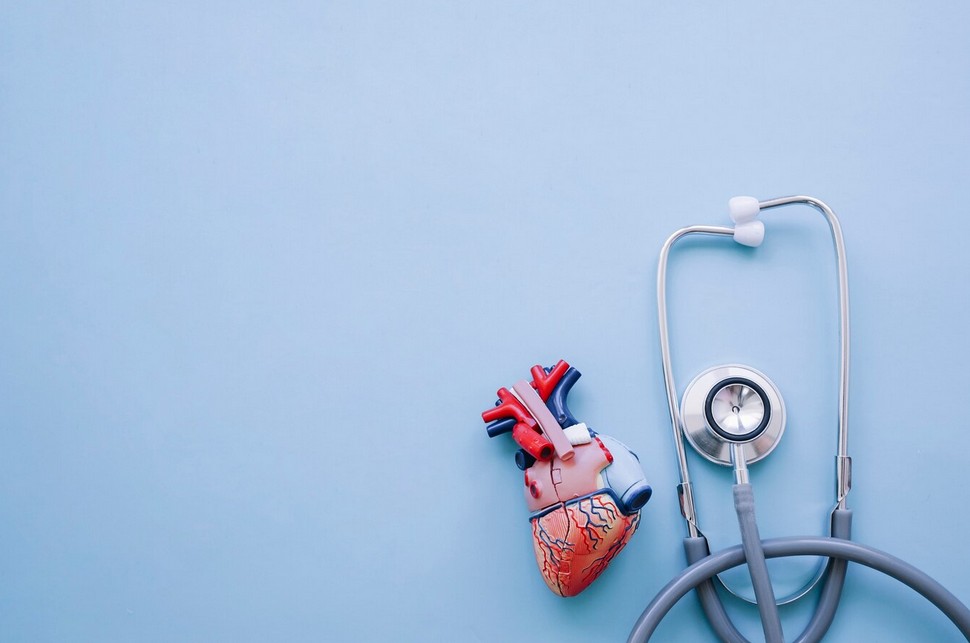
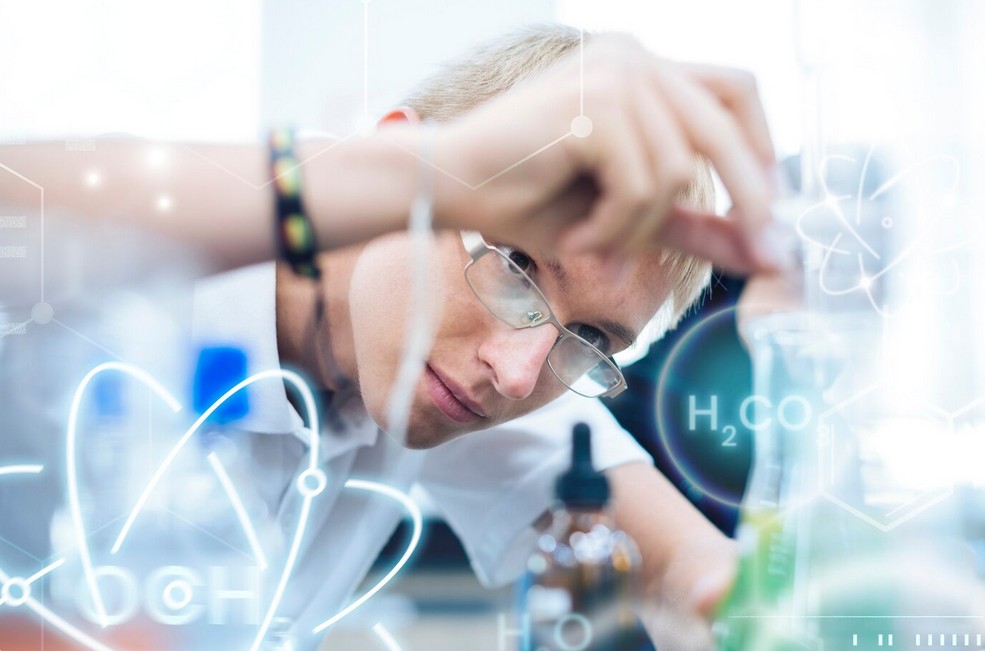

The Indomitable Importance of Life Science Translation Services: A Global Mandate.
The Criticality of Professional Translation in the Life Sciences.
The criticality of precise and contextually accurate translation within the life sciences cannot be overstated. It is not merely a logistical necessity but a fundamental enabler of global health, scientific collaboration, and commercial success. The absence of robust specialized translation services presents not just an impediment but a perilous liability, threatening patient well-being, impeding regulatory compliance, and curtailing market access. In an era defined by interconnectedness, the linguistic bridge built by professional life science translation companies is equally important as the scientific breakthroughs themselves. For a deeper understanding of all our offerings, visit our Professional Translation Services page.
Safeguarding Patient Safety and Public Health: The Ultimate Imperative.
At the very pinnacle of reasons for meticulously accurate life science document translations lies the paramount concern for patient safety and public health. Misinformation, ambiguity, or outright error in medical instructions, drug labels, or adverse event reports can have dire, even fatal, consequences.
- Accurate Dosage and Administration: Imagine a patient leaflet or an electronic medical record where a dosage instruction is mistranslated, leading to under-dosing or, worse, a toxic overdose. The ramifications are catastrophic. Professional translation ensures that vital information regarding drug administration, frequency, route, and contraindications is communicated with absolute clarity, irrespective of the patient’s native language.
- Informed Consent: As previously mentioned, Informed Consent Forms (ICFs) are legal and ethical cornerstones of clinical trials. Patients must fully comprehend the nature of the study, its potential risks and benefits, their rights, and alternatives before agreeing to participate. A poorly translated ICF undermines true informed consent, exposing pharmaceutical companies and CROs to severe legal liabilities and ethical breaches. This requires not just linguistic accuracy but also cultural sensitivity to ensure the message resonates appropriately.
- Medical Device Instructions: Complex medical devices, from implantable technologies to diagnostic machines, come with intricate operating instructions. Healthcare professionals and patients rely on these manuals for safe and effective use. Errors in document translations for the life sciences could lead to device malfunction, improper diagnosis, or patient injury. The consequences can be devastating.
- Pharmacovigilance and Adverse Event Reporting: The global surveillance of drug and device safety depends heavily on the accurate and timely translation of adverse event reports. When a patient experiences a side effect or a device malfunctions in a non-English speaking country, the report must be translated precisely for global analysis by regulatory bodies and manufacturers. Any distortion can delay identification of safety signals, preventing prompt corrective actions and thereby jeopardizing broader public health. This process is further expedited and made reliable through expert translation.
Ensuring Regulatory Compliance and Market Access: The Gatekeeper Role.
The life sciences are arguably the most heavily regulated industries globally. Gaining market authorization for a new drug, therapy, or device in multiple jurisdictions requires meticulous adherence to an often-dizzying array of linguistic and documentary requirements. Professional translation services for the life sciences are the indispensable keys to unlocking these global markets.
- Navigating Complex Regulatory Filings: Every major market has its own stringent requirements for submitting dossiers. The FDA, EMA, Health Canada, PMDA, China NMPA – each demands specific formats, terminologies, and often, certified translations of preclinical data, clinical study reports, manufacturing information, and more. A failure to comply linguistically can lead to immediate rejection of applications, incurring astronomical delays and costs, and potentially losing crucial market share. This is where a reliable language service provider for the life sciences proves its worth, mitigating these prohibitive risks.
- Avoiding Costly Delays and Penalties: Rejection or requests for clarification due to translation inaccuracies can delay product launches by months or even years. Such delays translate directly into immense financial losses—lost revenue, extended R&D costs, and increased legal and administrative expenses. Furthermore, regulatory non-compliance stemming from faulty translations can result in colossal fines and irreparable damage to a company’s reputation.
- Localized Labeling and Packaging: Drug labels, package inserts, and device packaging must conform to the precise linguistic and cultural standards of each target market, often down to font size, specific disclaimers, and local dialect nuances. This goes beyond mere translation; it’s about localization to ensure legal compliance and consumer understanding.
- Facilitating Global Clinical Trials: As clinical trials increasingly become multinational endeavors to recruit diverse patient populations and accelerate data collection, the ability to translate protocols, ICFs, PROs, and other trial-related documents accurately and consistently across multiple languages is paramount for regulatory approval in each participating country. Without expert translation, ethical review boards in various countries simply cannot approve studies.
Fostering Global Collaboration and Knowledge Dissemination: Advancing Science.
Science is a global enterprise, and the rapid sharing of research findings, methodologies, and innovations is vital for accelerating progress. Translation serves as the crucial conduit for this international intellectual exchange.
- Disseminating Research Findings: Scientific papers, journals, and presentations from researchers worldwide need to be accessible to the broader scientific community, irrespective of their original language. High-quality translation services for scientific content ensure that breakthroughs made in one corner of the world can be understood and built upon by scientists elsewhere, avoiding redundant research and fostering new discoveries. For credible scientific sources, consider platforms like PubMed or MedlinePlus.
- Enabling Multinational R&D: Pharmaceutical companies and academic institutions often conduct research collaboratively across borders. This necessitates the seamless translation of internal communications, research data, lab protocols, and intellectual property documents. Without this linguistic fluidity, collaborative efforts would be severely hampered, reducing efficiency and innovation.
- Facilitating Cross-Border Training and Education: Medical professionals and researchers require ongoing training on new drugs, therapies, and equipment. E-learning modules, training manuals, and instructional videos must be translated to equip global healthcare workforces with the knowledge necessary for optimal patient care and research execution. Learn more about our specialized eLearning Translation Solutions.
Driving Commercial Success and Market Penetration: The Competitive Edge.
For life science companies, global expansion is often a critical driver of growth. Effective translation is not just a cost of doing business but a strategic investment that directly impacts market reach, brand perception, and revenue.
- Effective Marketing and Patient Engagement: Beyond regulatory documents, engaging with target audiences—whether healthcare professionals, patients, or investors—in their native language builds trust and facilitates understanding. Translated websites, patient education materials, and marketing campaigns must be culturally resonant and ethically compliant. A compelling, accurately translated message can significantly enhance market acceptance and brand loyalty. Consider our expertise in Solutions for Digital Marketing & Advertising.
- Competitive Advantage: Companies that invest in high-quality, professional language services for the life sciences gain a significant competitive edge. They can launch products faster in more markets, communicate more effectively with global stakeholders, and build a stronger, more trustworthy international brand. Conversely, those that cut corners on translation risk alienating potential customers and failing to meet regulatory expectations.
- Localizing Product Information: Simply translating a product name isn’t enough. Successful market penetration requires localizing product information to align with local healthcare practices, cultural norms, and even specific disease prevalence. This meticulous attention to detail, enabled by expert language service providers for the life sciences, can significantly impact sales figures and market share.
- Protecting Intellectual Property: Translating patent applications and related intellectual property documentation with absolute precision is crucial for protecting innovations in international markets, safeguarding a company’s competitive standing and investment in R&D. For legal translation needs, see our Legal Translation Services.
In essence, for every pharmaceutical giant, burgeoning biotech firm, or medical device innovator, overlooking the profound importance of specialized linguistic services is tantamount to operating with a critical vulnerability in a globalized ecosystem. It’s an investment in safety, compliance, collaboration, and ultimate commercial triumph.
Bridging Language Barriers, Globally
Expand Reach with Seamless Scientific Communication
Break down global communication barriers. Our comprehensive life science translation services empower your research and products to reach new markets with clarity and impact.
The Professional Translation Process: A Meticulous Blueprint for Unassailable Quality in Life Sciences.
The Professional Translation Process: A Meticulous Blueprint for Unassailable Quality in Life Sciences.
The intricate demands of linguistic support for the life sciences necessitate a meticulously structured, multi-stage process that leaves no room for ambiguity or error. It is a carefully orchestrated sequence of steps, each executed with rigorous attention to detail, leveraging both the unparalleled discernment of human experts and the efficiency of AI-empowered solutions. A leading language service provider for the life sciences like Oristranslations adheres to a stringent workflow, ensuring that every life science document not only mirrors the source text accurately but also complies with regulatory mandates and resonates perfectly with its target audience. This comprehensive process is the embodiment of our commitment to both precision and expediency. Our overarching approach to quality in Professional Translation Services sets the standard.
Phase 1: Project Initiation and Meticulous Preparation – Laying the Impeccable Foundation
The journey towards a flawless translation begins long before a single word is translated. This initial phase is equally important to the translation itself, setting the stage for success.
- Comprehensive Document Analysis and Scope Definition
Upon receiving a client’s request for document translation in the life sciences, our project managers, who possess a keen understanding of the life sciences sector, initiate a profound analysis. This involves:
- Content Complexity Assessment: Evaluating the scientific, medical, and technical complexity of the source material. Is it highly specialized clinical data, patient-facing information, or legal regulatory text? This determines the specific expertise required.
- Target Audience Identification: Understanding who the end-users of the translation will be (e.g., regulatory bodies, clinicians, patients, researchers). This influences tone, terminology, and readability.
- Volume and Format Assessment: Determining the word count, file formats (e.g., Word, InDesign, XML, software strings), and any specific formatting requirements (DTP needs, image localization).
- Regulatory Requirements: Identifying any specific regional or international regulatory guidelines (e.g., FDA, EMA, ISO standards like ISO 17100 for translation quality, or ISO 13485 for medical devices) that the translation must adhere to. This is crucial for compliance.
- Expert Team Assembly: The Right Mind for the Right Task
Based on the analysis, a dedicated project team is meticulously assembled. This is where our solid human experience truly shines.
- Subject Matter Expert (SME) Translator Selection: We select a primary translator who is not only a native speaker of the target language and fluent in the source language but also possesses profound expertise in the specific therapeutic area or scientific discipline of the document (e.g., an oncologist for cancer research papers, a biomedical engineer for medical device manuals). Their credentials and proven experience are paramount.
- Specialized Reviewer/Editor Selection: A second, equally qualified SME linguist is assigned to the project to perform an independent review. This ensures a fresh perspective and a robust quality check, vital for unassailable accuracy.
- Terminology and Style Guide Development/Consultation: If not provided by the client, we work to create or refine a project-specific glossary of key terms and a style guide. This guarantees consistent terminology and tone across all translations, further enhancing quality and consistency. For existing clients, we leverage and update their established TMs and TermBases.
- Technological Preparation and Workflow Configuration
This phase integrates our AI-empowered solutions into the human-centric process.
- CAT Tool Preparation: The source document is loaded into our secure Computer-Assisted Translation (CAT) tools (e.g., Trados, MemoQ). This segments the text, prepares it for translation memory leverage, and facilitates efficient project management.
- Translation Memory (TM) & TermBase Integration: Relevant existing TMs are applied to pre-translate any repeated segments, ensuring consistency with past translations and reducing costs. Project-specific TermBases are loaded to enforce correct terminology from the outset.
- Machine Translation (MT) Integration (where applicable): For suitable content types, an optimized NMT engine, often trained on life science data, may be integrated to provide a first pass, which will then undergo rigorous human post-editing. This strategic use of AI ensures speed while maintaining human oversight. Learn more about our Machine Translation (with Human Post-Editing) services.
- QA Tool Configuration: Automated Quality Assurance (QA) tools are configured with project-specific checks for numbers, punctuation, tags, and basic terminology adherence.
Phase 2: The Core Translation and Multilayered Review – Crafting Precision
This is the active translation phase, characterized by human linguistic artistry empowered by technology, followed by stringent quality control.
- Initial Translation by Subject Matter Expert
- The primary SME translator undertakes the initial translation. They meticulously render the source text into the target language, utilizing their scientific knowledge, linguistic prowess, and adhering to the pre-loaded TMs and TermBases. They are not simply translating words but accurately conveying complex scientific concepts, ensuring factual and contextual precision.
- During this stage, the translator actively researches any ambiguities in the source text, consults authoritative scientific references (e.g., PubMed, MedlinePlus), and flags any potential issues for the project manager.
- Comprehensive Editing and Scientific Review
- Upon completion of the initial translation, the document proceeds to the independent reviewer/editor, who is equally important in the quality chain. This linguist performs a thorough bilingual review, comparing the translated text against the source document segment by segment.
- Their critical role includes:
- Scientific Accuracy Verification: Ensuring that all scientific, medical, and technical concepts are conveyed precisely and correctly in the target language. This is where a second scientific mind can catch subtle misinterpretations.
- Linguistic Quality Enhancement: Refining the translation for grammatical correctness, idiomatic fluency, style, and natural flow in the target language. They ensure it reads as if originally written in the target language.
- Consistency Check: Verifying adherence to the approved TermBase and consistency with the Translation Memory, as well as internal consistency within the document itself.
- Compliance Adherence: Confirming that all regulatory and client-specific guidelines have been met.
- Any discrepancies or improvements are discussed and resolved collaboratively between the translator, editor, and project manager.
- Monolingual Proofreading and Final Polish
- After the bilingual review, a monolingual proofreader (a native speaker of the target language with strong linguistic skills, often distinct from the SME translator/editor) conducts a final read-through. This step focuses on the linguistic polish and overall readability of the translated text in isolation.
- They check for:
- Typographical errors, spelling mistakes, and grammatical slips.
- Punctuation errors.
- Formatting inconsistencies.
- Overall linguistic flow and naturalness.
- Ensuring the text is ready for its intended publication or use. This phase is about ensuring the text is impeccable.
Phase 3: The Concluding Phase: Final Checks and Secure, Timely Delivery
This concluding phase focuses on final checks and secure, timely delivery, incorporating any necessary post-translation services.
- Automated QA Checks and Linguistic Validation
Before delivery, the translated file is run through sophisticated automated QA tools. These tools perform a final sweep for numerical errors, tag discrepancies, double spaces, punctuation issues, and deviations from approved terminology lists. While automated, their output is still reviewed by a human QA specialist. For highly sensitive patient-facing materials (like PROs or ICFs), linguistic validation may be performed. This goes beyond standard translation and involves a rigorous process of forward translation, back translation, cognitive debriefing with target audience members, and expert review to ensure conceptual, cultural, and linguistic equivalence. This is an exacting step.
- Desktop Publishing (DTP) and Localization Engineering
If the original document involved complex layouts, graphics, or software interfaces, the translated text is meticulously integrated into the original design or software environment. Our Desktop Publishing Services specialists ensure that:
- Translated text fits appropriately within text boxes and image captions.
- Fonts and formatting match the source or client specifications.
- Graphics and images requiring localization are adapted appropriately (e.g., adapting culturally insensitive images, translating embedded text in diagrams).
- For software, localization engineers ensure all strings are correctly integrated, tested, and that the user interface functions flawlessly in the target language.
- Client Review and Feedback Integration (Optional but Recommended)
For optimal results, we encourage clients to conduct an internal review of the translated materials, especially for highly sensitive or public-facing content. This allows their in-country experts or marketing teams to provide feedback based on their specific knowledge of the local market and internal preferences. Any feedback received is carefully analyzed by our project managers and implemented by the original translation team, ensuring that all revisions maintain the overall quality and consistency. This collaborative approach is invaluable.
- Certification and Secure Delivery
For regulatory submissions or official use, we provide certified translations accompanied by a signed statement of accuracy and completeness from Oristranslations, affirming that the translation is a true and accurate rendition of the original document. This certification is often a legal requirement for submissions to regulatory bodies like the FDA or EMA. Finally, the translated and quality-assured documents are delivered to the client via secure, encrypted channels, ensuring confidentiality and data integrity, a paramount concern when dealing with sensitive life science documents.
This systematic, multi-layered approach, underpinned by both the solid human experience of our specialized linguists and the power of AI-empowered solutions, is what distinguishes a truly professional language service provider for the life sciences. It is a meticulous journey from source to target, guaranteeing accuracy, compliance, and unmatched quality.pact in a field where compromise is simply not an option.
Regulatory Compliance, Every Time. Navigate Complex Regulations with Confident Translations.

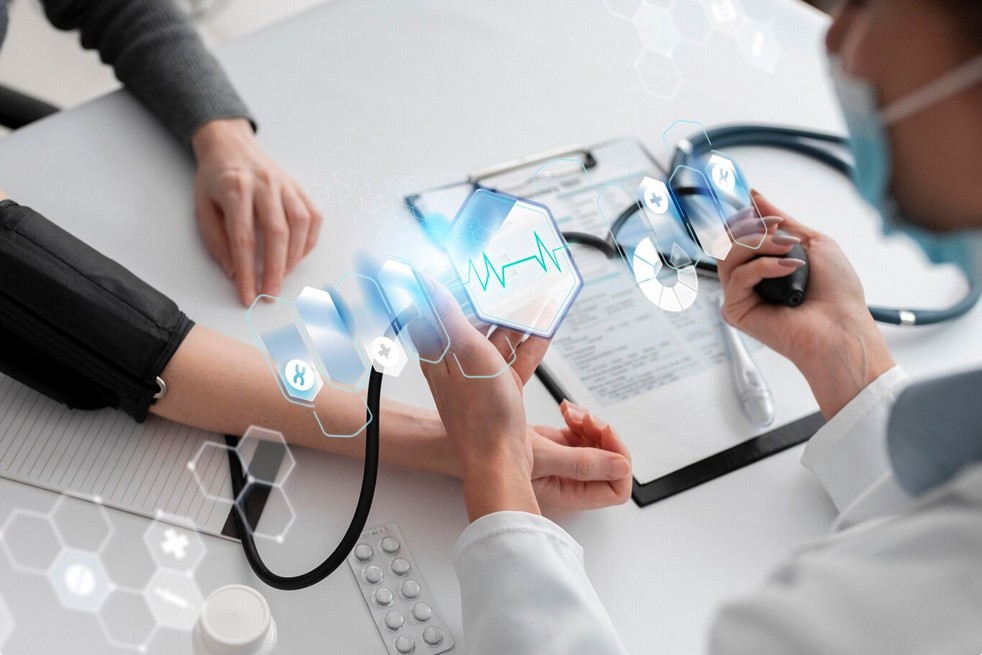
Industry-Specific Professional Translation Expertise: Navigating the Nuances of Each Life Science Domain.
Pharmaceutical Translation Services: From Molecule to Market, Precision in Every Phase
The pharmaceutical industry, with its arduous and lengthy drug development lifecycle, presents some of the most stringent demands for translation. The journey from a promising molecule in the lab to a widely available therapeutic involves immense documentation, each requiring unwavering accuracy. Discover more about our specialized support for this sector on our Financial Translation Services or Technical Translations (for technical reports).
Regulatory Rigor and Uncompromising Safety.
Pharmaceutical translations are governed by an exacting regulatory framework designed to ensure drug safety and efficacy. Documents like Common Technical Documents (CTDs), Investigational New Drug (IND) applications, New Drug Applications (NDAs), and Marketing Authorization Applications (MAAs) are massive undertakings, often spanning tens of thousands of pages. Each component—from preclinical pharmacology and toxicology reports to clinical study reports, manufacturing data, and quality control documentation—must be translated with absolute precision, adhering to the specific terminological and formatting requirements of agencies such as the FDA, EMA, Health Canada, and Japan’s PMDA. A single misstep can lead to catastrophic delays, regulatory rejections, and astronomical financial penalties. The ethical imperative here is profound: patient safety hinges on crystal-clear instructions for usage, potential side effects, and contraindications.
Complexity of Language and Audience Diversification.
Pharmaceutical content oscillates between highly technical scientific prose (for researchers and regulators) and simplified, yet accurate, patient-friendly language (for Patient Information Leaflets/PILs and patient-reported outcomes). This demands a translator not only with a deep scientific background (e.g., pharmacology, toxicology, biochemistry) but also the linguistic finesse to adapt tone and register appropriately. Consider the meticulous translation of adverse event reports, where specific medical conditions, dosages, and patient reactions must be conveyed without ambiguity, while maintaining the speed required for pharmacovigilance.
- Key Documents
- Clinical Trial Protocols, Synopses, and Reports
- Investigator Brochures (IBs)
- Informed Consent Forms (ICFs) and Patient-Reported Outcomes (PROs)
- Regulatory Submissions (CTDs, NDAs, MAAs)
- Summary of Product Characteristics (SmPCs) and Patient Information Leaflets (PILs)
- Manufacturing and Quality Control (CMC) Documentation (SOPs, Batch Records)
- Pharmacovigilance Reports (Adverse Event Reports, PSURs)
- Drug Labels and Packaging Inserts
- Pharmaceutical Marketing Materials (compliant with local advertising regulations). For broader marketing translation, see Solutions for Digital Marketing & Advertising.
Medical Device Translation Services: Engineering Clarity for Global Health.
The medical device industry, characterized by sophisticated engineering and direct patient interaction, presents a distinct set of linguistic challenges. Here, the emphasis is heavily on technical accuracy, user safety, and adherence to specific device regulations. Our dedicated Translation Services for the Life Sciences page provides more context on our medical device expertise.
Technical Precision and User Safety.
Medical device translations directly impact user safety and device functionality. Instructions for Use (IFUs), user manuals, installation guides, and maintenance protocols must be translated with unambiguous clarity, leaving no room for misinterpretation by clinicians, technicians, or patients. Translators in this domain require not only medical knowledge but often a strong grasp of engineering, electronics, software, and mechanical principles. A misplaced comma or an incorrect verb tense in an IFU can lead to improper device operation, patient harm, or even fatalities. This makes the role of a professional life science language service provider irreplaceable.
Regulatory Compliance (MDR, IVDR, FDA).
The regulatory landscape for medical devices is particularly stringent and evolving, exemplified by the European Medical Device Regulation (MDR) and In Vitro Diagnostic Regulation (IVDR). These regulations have significantly heightened the requirements for technical documentation and labeling, necessitating highly accurate and compliant translations for every market. Ensuring that all relevant documents—from risk management files to post-market surveillance reports—are precisely translated is paramount for market entry and continuous compliance.
Localization of Software and User Interfaces.
Many modern medical devices incorporate software interfaces. Translating these requires not just linguistic accuracy but also software localization expertise. This includes adapting user interfaces (GUIs), error messages, online help, and embedded firmware, ensuring the software functions flawlessly and intuitively in the target language. This demands a synergy between linguistic experts and localization engineers. Our Website Localization service can provide additional context on our capabilities in adapting digital content.
Key Documents:
- Instructions For Use (IFUs) and User Manuals
- Labels, Packaging, and Cartons
- Software UI Strings and Help Files
- Technical Files and Design Dossiers (for regulatory submission)
- Risk Management Files
- Clinical Evaluation Reports (CERs)
- Post-Market Surveillance (PMS) Reports
- Sales and Marketing Collateral
Biotechnology Translation Services: Bridging Innovation and Global Understanding.
The biotechnology sector, rapidly advancing with innovations in genomics, proteomics, gene therapy, and bioinformatics, operates at the cutting edge of scientific discovery. Translating for this dynamic field requires linguists who are not only scientifically adept but also attuned to nascent terminologies and evolving concepts. Our expertise in Technical Translations is highly relevant here.
Evolving Terminology and High-Volume Data.
Biotechnology is characterized by rapid innovation, leading to continuously evolving terminology and the emergence of new concepts. Translators must be consistently abreast of the latest scientific literature and research. Furthermore, biotech companies generate vast amounts of data, from complex research papers and patent applications to detailed experimental protocols and bioinformatics analyses. Managing and accurately translating this high volume of complex data is a significant undertaking that benefits immensely from AI-empowered solutions paired with human oversight.
Intellectual Property Protection.
For biotechnology firms, intellectual property (IP) is their lifeblood. The precise translation of patent applications, scientific publications, and licensing agreements is critical to protecting valuable innovations across international jurisdictions. A minor translation error in a patent claim could invalidate protection, leading to severe financial and competitive repercussions. This is where the solid human experience of specialized legal and scientific translators is unquestionably vital. For related services, refer to Legal Translation Services.
Interdisciplinary Nature.
Biotechnology often sits at the intersection of various scientific disciplines—biology, chemistry, engineering, computer science. This interdisciplinary nature demands translators capable of navigating complex concepts from multiple scientific fields simultaneously.
- Key Documents:
- Research Papers, Journals, and Scientific Publications
- Patent Applications and Intellectual Property Documents
- Genetic and Genomic Data Reports
- Preclinical Study Reports
- Biomanufacturing Protocols and SOPs
- Bioinformatics Software and Database Localization
- Grant Applications and Funding Proposals
- White Papers and Scientific Marketing Materials
Clinical Research Translation Services: Accelerating Global Trials.
As clinical trials increasingly become multinational endeavors, the demand for highly specialized clinical research translation has surged. This domain requires not only scientific precision but also a keen awareness of ethical considerations and the intricate processes of global patient recruitment and data collection. Our Translation Services for the Life Sciences page offers further detail on our capabilities in supporting clinical trials.
Ethical Sensitivity and Patient Focus.
A core challenge in clinical research translations, particularly for documents like Informed Consent Forms (ICFs) and Patient Reported Outcomes (PROs), is ensuring ethical communication. Translations must be clear, culturally sensitive, and easy for patients to understand, regardless of their literacy level. This goes beyond mere linguistic conversion; it involves a deep understanding of patient comprehension and the ethical implications of the trial. Linguistic validation, a rigorous process, is often employed to ensure that concepts in PROs are equivalent across languages, further safeguarding data integrity and patient well-being.
Regulatory Alignment Across Jurisdictions.
Clinical trials must gain approval from Institutional Review Boards (IRBs) or Ethics Committees (ECs) in every country where they are conducted. This necessitates translating protocols, amendments, recruitment materials, and patient-facing documents to meet each country’s specific ethical and regulatory guidelines. Managing these diverse requirements across multiple languages and jurisdictions is a monumental task that underscores the importance of expert linguistic support in the life sciences.
Data Consistency and Confidentiality.
Clinical research generates vast amounts of highly sensitive patient data. Accurate translation of Case Report Forms (CRFs), electronic data capture (EDC) system interfaces, and safety reports is paramount for consistent data collection and analysis across global sites. Maintaining the confidentiality and integrity of this data throughout the translation process is also a non-negotiable requirement, necessitating secure translation platforms and stringent data handling protocols, in line with GDPR-info.eu for EU data and HHS for US data.
- Key Documents:
- Clinical Trial Protocols and Amendments
- Informed Consent Forms (ICFs)
- Patient Reported Outcomes (PROs) and Clinician Reported Outcomes (CROs)
- Case Report Forms (CRFs) and EDC System Strings
- Investigator Brochures (IBs)
- Recruitment Materials (advertisements, patient diaries)
- Ethics Committee/IRB Submission Documents
- Clinical Study Reports (CSRs)
- Investigational Medicinal Product Dossiers (IMPDs)
By specializing in these distinct life science domains, a reputable life science language service provider ensures that clients receive not just accurate translations, but culturally astute, legally compliant, and strategically aligned linguistic solutions that propel their global initiatives forward. The ability to offer this breadth and depth of expertise is a hallmark of truly distinguished language services for the life sciences.
Unlocking Innovation, Faster Than Ever.
Expedited Translations for Rapid Scientific Advancement.
Time is critical in life science. Our efficient blend of AI and human expertise ensures rapid turnaround times, accelerating your path to global scientific breakthroughs.
The Future of Life Science Translation: An Indelible Partnership of Human Acumen and Advanced AI.
The Trajectory of AI in Translation: A Synergistic Partnership
The trajectory of language services for the life sciences is inexorably linked to the relentless march of technological innovation, particularly in the realm of Artificial Intelligence. Far from rendering human linguists obsolete, AI is catalyzing a profound evolution in the industry, redefining workflows, enhancing capabilities, and elevating the strategic importance of expert life science language service providers. The future is not one of machine versus human, but rather of a sophisticated, synergistic partnership where the unparalleled discernment of human subject-matter experts is amplified by the speed, consistency, and analytical power of AI-empowered solutions. This burgeoning symbiosis promises to deliver translations of unprecedented accuracy, efficiency, and scale, addressing the ever-growing global demands of the life sciences sector. For a broader perspective on how we embrace innovation, visit our Comprehensive Translation Services page.
The Evolving Landscape of AI in Translation: Beyond Simple MT
The advancements in AI, especially in Natural Language Processing (NLP) and Neural Machine Translation (NMT), have transformed what was once a rudimentary tool into a highly sophisticated assistant.
- Contextual Understanding and Domain-Specific Engines. Early machine translation systems often struggled with the nuances, idiomatic expressions, and highly specific terminology of complex domains like life sciences. However, modern NMT engines, particularly those trained on vast, curated datasets of life science documents, are exhibiting remarkable improvements in contextual understanding. These domain-specific engines learn the intricate relationships between terms, the subtle variations in meaning based on context, and even stylistic preferences within specific therapeutic areas. This allows for significantly more fluent and accurate initial translations, providing an advantageous starting point for human post-editing. Our approach Machine Translation (with Human Post-Editing) exemplifies this.
- Generative AI and Large Language Models (LLMs). The advent of Generative AI and Large Language Models (LLMs) like GPT-4 and beyond is poised to introduce even more transformative capabilities. While their application in high-stakes, regulated content like documents for life science translation still requires cautious human oversight, LLMs offer potential for:
- Content Creation Support: Assisting in drafting initial versions of less critical, patient-facing materials, which can then be rigorously validated and refined by human experts.
- Terminology Extraction: Rapidly identifying key terminology from vast bodies of text, aiding in the creation and maintenance of robust TermBases.
- Summarization and Information Retrieval: Quickly summarizing complex scientific papers or regulatory guidelines in different languages, further aiding human translators and project managers in understanding the core content.
- Quality Assurance Augmentation: Enhancing automated QA tools by leveraging advanced linguistic analysis to detect more nuanced errors or stylistic inconsistencies that traditional rules-based systems might miss.
It is crucial, however, to underscore that the output of these generative AI models for life sciences demands uncompromising human verification and validation due to the critical nature of the information. The risk of plausible but factually incorrect «hallucinations» or subtle misinterpretations by AI necessitates the continuous involvement of the solid human experience.
- Integration within CAT Tools and Workflow Automation. The future will see even deeper integration of AI capabilities directly into Computer-Assisted Translation (CAT) tools. This means:
- Smarter TM and TermBase Suggestions: AI will provide more intelligent and context-aware suggestions from Translation Memory and Terminology Databases, reducing manual lookup time.
- Adaptive MT: MT engines will become more «adaptive,» learning from real-time post-edits made by human linguists, thereby improving their output continuously for specific client accounts or therapeutic areas. This allows for personalized AI models.
- Enhanced Workflow Automation: AI will automate more administrative and preparatory tasks, such as file analysis, pre-processing, and even initial project scheduling, freeing up project managers to focus on strategic client communication and quality oversight.
- Real-time Collaboration Platforms: AI-powered platforms will facilitate real-time collaboration among geographically dispersed translation teams, enabling more fluid communication and faster resolution of linguistic queries.
The Indispensable Role of the Human Linguist in the AI Era.
Despite the escalating sophistication of AI, the human element in life science linguistic services remains, and will forever remain, indispensable. The role of the human linguist is not being replaced, but rather profoundly redefined and elevated.
- The Arbiter of Accuracy and Nuance. AI, for all its prowess, still struggles with true understanding, abstract reasoning, cultural nuance, and ethical judgment. These are precisely the areas where human translators provide unparalleled value:
- Contextual Interpretation: Humans are uniquely equipped to understand the implicit context, cultural implications, and underlying intent of a text, especially in highly sensitive areas like patient communication or regulatory interpretations. AI can suggest, but a human discerns.
- Linguistic Validation and Cultural Adaptation: Ensuring that a medical questionnaire or patient-facing material is not just translated, but conceptually and culturally equivalent across diverse populations, requires human cognitive debriefing and expert judgment, a process far beyond current AI capabilities.
- Ethical Oversight and Liability: When patient safety or regulatory compliance is at stake, the ultimate responsibility and liability rest with human professionals. Translators provide the critical layer of human accountability, reviewing and validating every aspect of the translated content. The importance of translation services for the life sciences cannot be delegated solely to algorithms when lives are on the line.
- Creative and Adaptive Problem Solving: Handling highly unusual phrasing, newly emerging scientific concepts without established terminology, or complex legal ambiguities requires human creativity and adaptive problem-solving skills that AI cannot replicate. For assistance with complex problems, consider our Linguistic Consulting services.
- Quality Assurance Mastermind: The human post-editor and reviewer remain the ultimate guardians of quality. They identify subtle errors, awkward phrasing, and conceptual inaccuracies that even advanced automated QA tools might miss. Their solid human experience is the final determinant of linguistic excellence and scientific integrity.
- Evolving Skillsets: From Translators to Linguistic Architects. The human linguist of the future in life science language service providers will be less of a word-for-word converter and more of a «linguistic architect» or «AI whisperer.» Their evolving skillset will include:
- Advanced Post-Editing Proficiency: Mastering the art of quickly and accurately refining AI-generated translations, recognizing patterns of AI errors, and efficiently correcting them.
- Data Curation and Annotation: Playing a role in curating high-quality, domain-specific training data for AI models, thus further improving the performance of customized NMT engines.
- Technological Fluency: A deep understanding of how CAT tools, AI models, and localization platforms work, enabling them to leverage these technologies to their fullest potential.
- Critical Thinking and Ethical Reasoning: Sharpening their analytical and ethical decision-making skills to navigate the complexities and responsibilities inherent in document translation for the life sciences.
- Consultative Role: Providing valuable insights to clients on the best translation strategies, optimal technology utilization, and regulatory nuances for their specific content and target markets.
Ethical Considerations and Data Security in the AI Era.
As AI becomes more integrated into language services for the life sciences, crucial ethical considerations and data security protocols become even more paramount.
- Data Privacy and Confidentiality: Documents for the life sciences often contain highly sensitive and confidential information, including patient data, proprietary research, and intellectual property. The use of AI, particularly cloud-based solutions, raises critical questions about how this data is stored, processed, and used for AI model training. A reputable translation company for the life sciences must employ stringent data security measures, including end-to-end encryption, secure servers, compliance with regulations like GDPR and HIPAA, and clear policies on data anonymization and usage.
- Bias and Fairness: AI models are trained on vast datasets, and if these datasets contain inherent biases (e.g., historical gender biases in medical texts, underrepresentation of certain linguistic variations), the AI output can inadvertently perpetuate these biases. Human oversight is essential to identify and rectify such biases, ensuring that translations are fair, inclusive, and culturally appropriate, especially in patient-facing communications.
- Accountability and Liability: In instances of translation error with potentially severe consequences, who bears the liability when AI is involved? This complex question underscores the necessity of maintaining human accountability at every stage of the life science translation process. Professional translation companies for the life sciences must ensure robust human review layers to mitigate this risk and provide a clear chain of accountability.
- Transparency: Understanding how AI systems arrive at their translations (the «black box» problem) can be challenging. For critical life science documents, there must be a level of transparency or, at minimum, a human-auditable trail to ensure the reliability and trustworthiness of the process.
The future of linguistic services for the life sciences is undoubtedly a hybrid one, characterized by an unprecedented collaboration between human ingenuity and artificial intelligence. While AI offers remarkable tools for speed, consistency, and efficiency, it is the solid human experience—the scientific acumen, cultural sensitivity, ethical judgment, and critical thinking of expert linguists—that will remain the ultimate guarantor of quality.ality, precision, and patient safety in this vitally important sector.
Your Trusted Partner in Global Science.
Reliable Life Science Translation for Critical Projects.
Partner with a leader in life science translation. We are dedicated to delivering precise, reliable, and high-quality translations for all your vital scientific communication needs.
Conclusion: Oristranslations – Your Steadfast Partner in Global Life Science Linguistic Excellence.
In an era defined by unprecedented global collaboration, rapid scientific discovery, and stringent regulatory oversight, the role of professional language services for the life sciences has transcended mere linguistic conversion to become a strategic imperative. The very safety of patients, the successful navigation of complex international markets, and the acceleration of scientific progress hinges upon the unassailable accuracy and cultural resonance of every translated document. From the meticulous protocols of clinical trials to the critical instructions for medical devices and the expansive dossiers for pharmaceutical approvals, precision is not a luxury; it is the absolute foundation upon which trust, compliance, and ultimately, human health are built. To explore our full capabilities, we invite you to visit our Professional Translation Services page.
Oristranslations stands at the vanguard of this critical field, distinguishing itself as a premier scientific translation company through its unique and powerful methodology. We have deliberately chosen a path that embraces the best of both worlds: the solid human experience of our exceptionally qualified linguists and the transformative capabilities of AI-empowered solutions. Our human experts, with their profound scientific backgrounds and decades of hands-on experience, provide the nuanced understanding, ethical judgment, and contextual mastery that no machine, however advanced, can replicate. Conversely, our strategic deployment of cutting-edge AI, including sophisticated Neural Machine Translation (NMT) engines, robust Translation Memories (TMs), and meticulous Terminology Management (TermBase) systems, significantly enhances efficiency, accelerates turnaround times, and ensures unparalleled consistency across vast volumes of documents for the life sciences. Learn more about how we integrate technology on our Machine Translation (with Human Post-Editing) page.
This synergistic approach allows us to address the diverse and evolving needs of the pharmaceutical, biotechnology, medical device, and clinical research sectors with unwavering commitment to quality. We understand that in the life sciences, even the slightest linguistic inaccuracy can have catastrophic consequences. This profound awareness drives our multi-layered quality assurance process, where every translation undergoes rigorous review by independent subject-matter experts, ensuring scientific validity, linguistic fluency, and absolute regulatory compliance. For specific details on our dedicated life science expertise, visit our Translation Services for the Life Sciences page.
Choosing Oristranslations means entrusting your critical content to a partner who comprehends the profound importance of specialized linguistic services. It means gaining access to a global team dedicated to facilitating your breakthroughs, safeguarding your compliance, and expanding your reach in every corner of the world. As the landscape of life sciences continues its dynamic evolution, marked by personalized medicine, advanced therapies, and increasing digital integration, Oristranslations remains committed to innovating our processes, further refining our blend of human and AI capabilities, and maintaining our position as your trusted ally in achieving global linguistic excellence. Let us be the bridge that connects your innovations to the world, safely and effectively.
Regulatory Ready
Navigate complex global regulations with confidence. Our life science translation company delivers translations that meet stringent industry standards, every time.
Accelerate Discovery
Don’t let language be a barrier to progress. Our efficient life science translation services help expedite your research and development timelines.
Expert Linguists
Trust your vital scientific content to our specialized team. We are the leading life science translation company for accuracy and industry expertise.
Frequently Asked Questions (FAQ) about Professional Life Science Translation Services
Here are some common questions regarding life science translation services, providing clarity on their critical nature and how a specialized life science translation company addresses them.
Don’t Hesitate, Contact Us Today!
Your Questions, Our Expertise!
Click the button to reach out to Oris Translations for any inquiries about life science translations, new projects, or if you simply need more information. We’re here to help!

